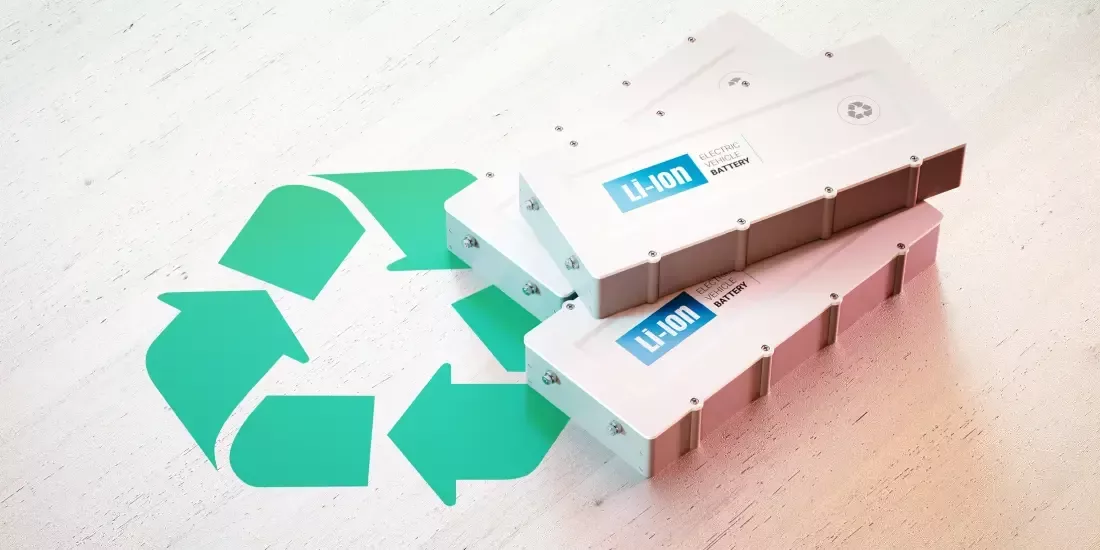VW to Recycle EV Batteries

One of the biggest problems with electric vehicles is what to do with the batteries once they are used up. You can recharge an EV for roughly ten years before the battery might need to be replaced, which is around 100,000 miles. Fortunately, some carmakers like Volkswagen are doing their part to introduce a circular economy.
Joint Venture EV Battery Recycling
In a deal with Ecobat, VW is collecting and recycling EV batteries. As Ecobat is the global leader in battery recycling, this mission is helping to reduce waste and increase sustainability.
This partnership actually started in 2014, when lead-acid batteries were collected for the genuine parts provider TPS. In 2019, the contract was extended to include high-voltage batteries. Since the opening of a centre in the West Midlands, thousands of batteries have been processed and upgraded.
The latest agreement now permits Ecobat to collect and recycle lithium-ion batteries. These will be sourced from dealers, distributors and recycling centres and processed at their brand new UK lithium-ion recycling centre. This marks Ecobat’s third centre, in addition to the ones in Germany and Arizona.
“We have been recycling lead batteries for VWG UK for a decade, and we are delighted to be able to extend our relationship to recycle EV lithium-ion batteries. [...] Our expertise in recycling and recovering scarce battery materials will benefit both Volkswagen Group and the environment.” Elliot Ethridge – Vice President of Global Sales for Ecobat
Why Battery Recycling Is Important
Batteries for electric cars are energy intensive to produce, not least because of the raw materials that need to be mined. With multiple renewable technologies requiring the same elements, there is a real danger for both labour conditions and the damaging effect it’s having on the planet.
Instead of a linear economy, where new materials are used all the time and then discarded when no longer useful, recycling introduces a circular economy. This helps us reuse precious materials from parts that aren’t in use.
Introducing a more sustainable production line helps meet the growing demand for electronics without having to deplete natural resources. The environmental effects of mining can also be mitigated, saving on emissions, water consumption and human rights exploitation.
How Much Charge Is Left In a Used Battery?
At the end of its lifespan for an EV, a battery will typically have 70–80% of its storage capacity left. While it does make it much more difficult to retain this for vehicular use, it does present a valuable opportunity to repurpose or recycle them.
One such way is to reuse these batteries for energy storage systems from renewable technology. The only thing preventing widespread use in this way is the lack of conformity surrounding design or make-up. This makes it more difficult to be able to implement them together with other battery technologies.
Conserving Battery Life
If you’ve got an EV, there are a few ways you can help conserve its useable lifespan. The easiest is to only ensure your battery is charged to 80%, never dropping below 20% when in storage. Once the battery gets to 80%, the charging process slows as the electrons fight to find room. It can sometimes take just as long to charge to 80% as it does to get from 80–100%.
Slow charging is often the most pragmatic approach to making your battery last. Not only will this save money, but it produces less heat, which limits the degradation of the battery. As useable components, batteries will always gradually deteriorate, but charging slowly for the majority of the time will help to limit the damage done.
A Home EV Charger
How much does it cost to charge an EV? Did you know that charging your EV at home is the cheapest way of doing so? Not only are public chargers subject to higher tariffs, but these can be even more at peak times. However, charging your EV at home means you only pay a residential tariff.
You can even get cheap overnight EV rates that can cut these prices even further.
If you’re interested in getting a home charger for your EV, use the button below to find out how much you’d pay.
